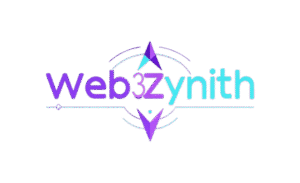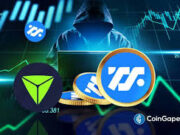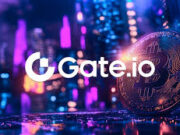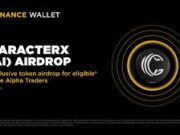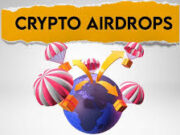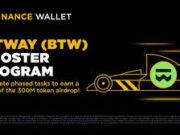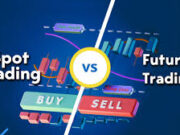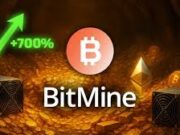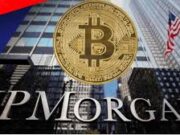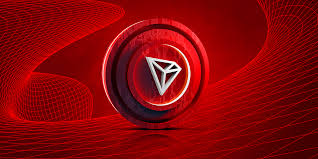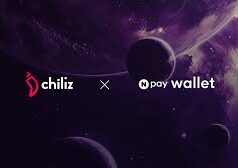In the dynamic landscape of blockchain technology, TRON has solidified its position as one of the most used and impactful networks in 2025. Boasting over 306 million users and processing more than 7 billion transactions to date, TRON stands out for its unparalleled user adoption, low-cost transactions, and focus on real-world applications. As a high-throughput blockchain designed to democratize content sharing and financial services, TRON is driving mass adoption, particularly in emerging markets. This blog post explores TRON’s rise to prominence, its technical strengths, ecosystem growth, and why it’s a cornerstone of the decentralized future, drawing on insights from recent data and community sentiment.
TRON’s Dominance: By the Numbers
TRON’s usage metrics in 2025 highlight its massive scale and influence:
- User Base: With 306 million+ accounts, TRON surpasses most blockchains in user adoption, outpacing competitors like Ethereum and Solana.
- Transaction Volume: TRON handles millions of daily transactions, with a cumulative total exceeding 7 billion, driven by its role in stablecoin transfers and decentralized applications (dApps).
- Stablecoin Transactions: TRON processes $80 billion in stablecoin volume, making it a preferred network for cross-border payments and financial applications.
- Transaction Fees: At an average cost of less than $0.0001 per transaction, TRON is one of the most cost-effective blockchains, rivaling Solana’s $0.00025 fees.
- Throughput: TRON supports up to 2,000 transactions per second (TPS), far exceeding Ethereum’s 15 TPS and Bitcoin’s 7 TPS, though trailing Solana’s 65,000 TPS.
These figures underscore TRON’s focus on accessibility and scalability, making it a go-to platform for users and developers worldwide. Posts on X frequently describe TRON as “the most used chain on Earth,” reflecting its real-world impact over speculative hype.
The TRON Vision: Decentralizing Content and Finance
Founded by Justin Sun in 2017, TRON aims to create a decentralized internet where content creators and users can interact without intermediaries. Initially focused on entertainment and peer-to-peer content sharing, TRON has evolved into a versatile layer-1 blockchain supporting a wide range of applications, from DeFi to gaming and stablecoin-based payments.The TRX token, TRON’s native cryptocurrency, serves multiple purposes:
- Transaction Fees: TRX is used to pay for network fees, ensuring low-cost transactions.
- Staking and Governance: Users can stake TRX to vote for Super Representatives (validators) and earn rewards.
- Ecosystem Access: TRX powers dApps and smart contracts, enabling seamless interactions within the TRON ecosystem.
With a $12.3 billion market cap and a TRX price of $0.139 as of July 8, 2025, TRON remains a top-10 cryptocurrency, reflecting strong market confidence.
Technical Strengths: Why TRON Excels
TRON’s architecture is built for scale and efficiency, leveraging several key features:
- Delegated Proof of Stake (DPoS):
- TRON uses a DPoS consensus mechanism, where users elect 27 Super Representatives to validate transactions. This reduces the number of nodes involved in consensus, enabling high throughput (2,000 TPS) and low latency.
- Compared to Ethereum’s Proof of Stake (PoS) or Bitcoin’s Proof of Work (PoW), DPoS is faster but less decentralized, a trade-off that prioritizes performance over validator diversity.
- Low-Cost Transactions:
- TRON’s negligible fees (often less than $0.0001) make it ideal for microtransactions, stablecoin transfers, and dApps. This contrasts with Ethereum’s higher gas fees, even after layer-2 scaling solutions like Arbitrum.
- For example, transferring USDT on TRON costs pennies, compared to dollars on Ethereum’s base layer.
- High Throughput:
- TRON’s ability to process 2,000 TPS supports high-volume applications, such as content platforms and financial services. While Solana’s 65,000 TPS is higher, TRON’s throughput meets the demands of its massive user base.
- Smart Contract Compatibility:
- TRON’s TRON Virtual Machine (TVM) is compatible with Ethereum’s EVM, allowing developers to port Ethereum-based dApps with minimal changes. This has attracted projects seeking lower fees and faster transactions.
Impact: These features make TRON a scalable, user-friendly platform, particularly for applications requiring frequent, low-cost transactions.
Ecosystem Growth: Powering Real-World Use CasesTRON’s ecosystem in 2025 is thriving, with a focus on practical applications that drive adoption:
- Stablecoin Dominance:
- TRON is the leading blockchain for Tether (USDT) transactions, handling $80 billion in stablecoin volume. Its low fees and fast confirmation times make it a preferred network for remittances, e-commerce, and cross-border payments, especially in Asia and Latin America.
- For example, merchants in emerging markets use TRON-based USDT for cost-effective global transactions, bypassing traditional banking systems.
- Decentralized Content and Entertainment:
- TRON’s original mission to decentralize content sharing remains strong. Platforms like BitTorrent, acquired by TRON in 2018, leverage the network for peer-to-peer file sharing, with millions of users worldwide.
- TRON-based dApps in gaming and streaming attract users with low-cost, high-speed interactions, competing with Solana’s gaming ecosystem.
- DeFi and NFTs:
- TRON hosts a growing number of DeFi protocols, such as JustLend and SunSwap, offering lending, borrowing, and trading services. While Ethereum leads in DeFi TVL ($64.5 billion vs. TRON’s $8 billion), TRON’s lower fees attract cost-conscious users.
- TRON’s NFT ecosystem, though smaller than Ethereum or Solana, is gaining traction, with marketplaces like APENFT supporting digital art and collectibles.
- Global Reach:
- TRON’s focus on emerging markets has driven adoption in regions with limited access to traditional banking. Its partnerships with local payment providers and content platforms have made TRON a household name in countries like China, India, and Nigeria.
Recent Developments: In 2025, TRON introduced upgrades to its TVM, enhancing smart contract performance and interoperability with other blockchains. The network’s Energy and Bandwidth model, which allows users to execute transactions without direct TRX payments by staking resources, continues to lower barriers to entry.
Community and Sentiment
Posts on X highlight TRON’s reputation as a “people’s blockchain,” with users praising its affordability and real-world utility. Sentiment reflects pride in TRON’s user base, with one X post noting, “TRON’s 306M users show it’s built for the masses, not just crypto bros.” The TRON community, led by Justin Sun’s active engagement, remains vocal about its mission to decentralize the web and empower creators.
Challenges and Criticisms
Despite its success, TRON faces challenges:
- Centralization Concerns: TRON’s DPoS model, with only 27 Super Representatives, is less decentralized than Ethereum (1M+ validators) or Solana (2,000+ validators). Critics argue this compromises security and censorship resistance.
- Reputation: Past controversies, including plagiarism allegations in TRON’s whitepaper and Justin Sun’s polarizing persona, have lingered, though recent focus on adoption has shifted narratives.
- Competition: Solana’s higher TPS and Ethereum’s DeFi dominance pose threats. Emerging networks like NEAR Protocol, with 46 million monthly active users, are also gaining ground.
- Scalability Limits: While 2,000 TPS is robust, TRON may struggle to match Solana’s or NEAR’s future targets (1M TPS), potentially capping its growth.
TRON vs. Competitors
- Ethereum: Ethereum leads in DeFi and NFTs but struggles with high fees and slower base-layer speeds. TRON’s low costs and user base give it an edge for mass-market applications.
- Solana: Solana’s 65,000 TPS and sub-second finality outpace TRON, but TRON’s larger user base and stablecoin dominance make it more entrenched in financial use cases.
- BNB Chain: BNB Chain’s 200 TPS and Binance-backed ecosystem compete with TRON, but TRON’s broader adoption and lower fees give it a slight advantage.
- NEAR Protocol: NEAR’s scalability and user growth are impressive, but TRON’s established ecosystem and stablecoin volume keep it ahead for now.
The Future of TRON
Looking ahead, TRON is well-positioned to maintain its leadership in 2025 and beyond:
- Ecosystem Expansion: New dApps in gaming, social media, and DeFi could further boost adoption.
- Interoperability: Enhanced cross-chain bridges with Ethereum and other networks will improve TRON’s integration into the broader Web3 ecosystem.
- Regulatory Compliance: TRON’s focus on stablecoins positions it to navigate regulatory landscapes, especially as governments scrutinize cryptocurrencies.
- User Onboarding: Continued emphasis on emerging markets and user-friendly tools will sustain TRON’s growth.
For developers, TRON offers a low-cost, high-speed platform to build dApps with global reach. For users, its affordability and utility make it a practical choice for everyday transactions. For investors, TRX’s stability and ecosystem growth present opportunities, though volatility and competition warrant caution.
Conclusion: TRON’s Path to Global Impact
In 2025, TRON stands as a titan of blockchain adoption, driven by its 306 million users, $80 billion in stablecoin volume, and 2,000 TPS throughput. Its low-cost transactions, robust ecosystem, and focus on real-world applications—from stablecoin payments to decentralized content—have made it a cornerstone of the decentralized economy. While challenges like centralization and competition persist, TRON’s ability to onboard millions and empower users in emerging markets sets it apart.
As blockchain technology reshapes the world, TRON’s vision of a decentralized internet is becoming reality, one transaction at a time. Whether you’re a developer, user, or investor, TRON’s scale and utility make it a network to watch in 2025 and beyond.
